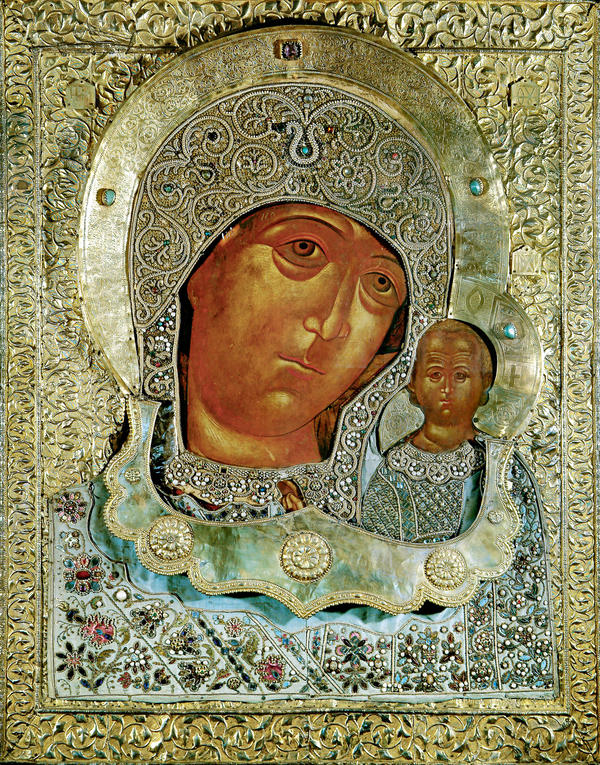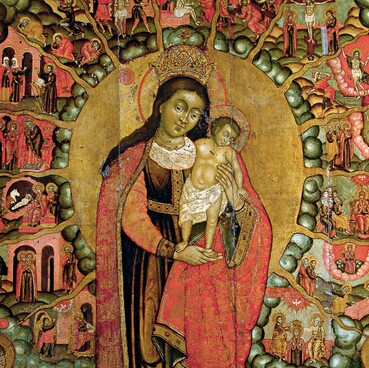This miraculous icon of Our Lady of Kazan is one of the most venerated Orthodox icons in Russia. It was discovered in Kazan on July 8, 1579. At that time, the city had already belonged to the Russian state. Tsar Ivan the Terrible annexed the Kazan Khanate, headed by the city of Kazan, to Russia in 1552.
In 1579, the city broke out in a fire, after which the Holy Virgin appeared in a dream to a ten-year-old girl from Kazan – Matrona. The Mother of God said that the icon with her image is at smouldering ruins in one of the parts of the city that suffered from the fire. People then found the icon, which was followed by numerous miraculous healings.
In 1579, the city broke out in a fire, after which the Holy Virgin appeared in a dream to a ten-year-old girl from Kazan – Matrona. The Mother of God said that the icon with her image is at smouldering ruins in one of the parts of the city that suffered from the fire. People then found the icon, which was followed by numerous miraculous healings.
The icon’s replica and a description of the miracles that it performed were sent to Ivan the Terrible. The tsar ordered to build the Virgin Mary Monastery on the site where the image of the Mother of God was discovered. The first nun in the monastery was the young woman Matron, who took the name Mavra in her monasticism. The icon’s replica and a description of the miracles that it performed were sent to Ivan the Terrible. The tsar ordered to build the Virgin Mary Monastery on the site where the image of the Mother of God was discovered. The first nun in the monastery was the young woman Matron, who took the name Mavra in her monasticism.
The monastery’s main church – stone cathedral of Our Lady of Hodigitria – was consecrated in 1595. By this time, Kazan Metropolitan Hermogenes, who later became the patriarch, had written The Tale of the Appearance and Miracles of the Icon. The metropolitan was a witness to the events of the acquisition of the miraculous image.
Our Lady of Kazan was especially venerated by the Romanov dynasty and in the 17th century it already became one of the most important Russian relics. October 22, 1612 there was a battle of Russian soldiers with the Poles in Moscow. The army of Prince Dmitry Pozharsky had a hold of a replica of the miraculous icon. The liberation of Moscow from the Poles was attributed precisely to the intercession of the Mother of God, which was manifested through the Kazan Icon.
In commemoration of this event, Tsar Mikhail Fedorovich assigned additional feast day to honour the icon. Now, except for the day of its appearance on July 8 (July 21 Gregorian calendar), people also celebrated October 22 (November 4 Gregorian calendar). During the reign of Aleksei Mikhailovich this celebration became an all-Russian.
The 17th-century Murom icon is one of the copies of the wonder-working image. The iconography of Our Lady of Kazan is similar to the Hodigitria type. Our Lady is depicted chest-high, hands are not visible. The baby is painted strictly frontally and standing. His right hand is folded in a blessing gesture and his left hand is down. The image is decorated with a silver setting with a crown and tsata - an old Russian ornament in the shape of an inverted crescent. The icon adorned the Kazan Virgin Mary Monastery until 1904, when it was stolen by unknown robbers.



